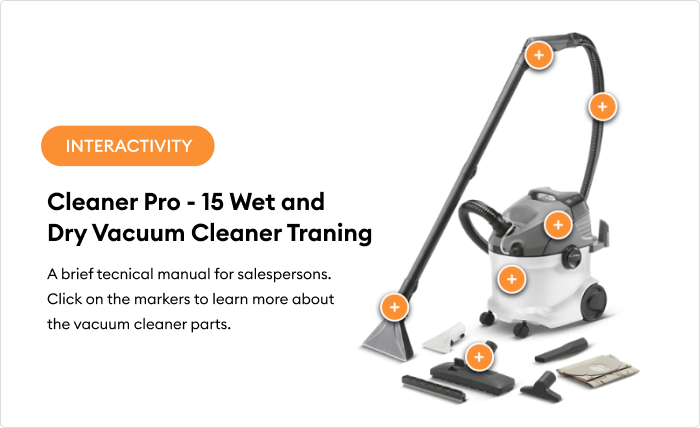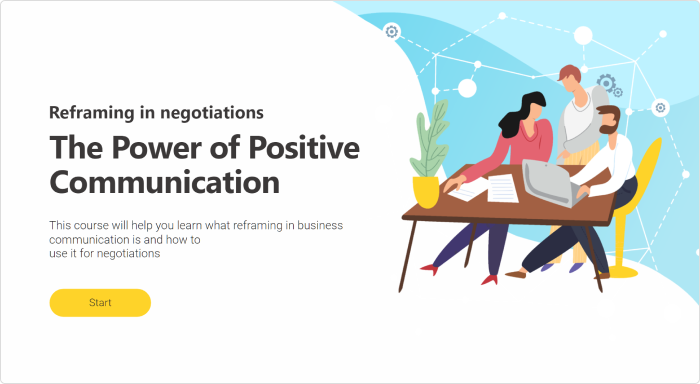17 Key Recruiting Metrics and How to Improve Them with Online Training

Businesses are composed of people, and recruitment is what brings people into a company. Recruitment goes on at every level of the corporate sphere, and hiring managers are those who find both frontline workers, qualified professionals, and senior executives. Teams depend heavily on the quality of their work.
Using recruiting metrics, teams can manage their hiring process and employee adaptation, build their brand and corporate reputation, and ensure team sustainability. In this article, we’ll describe the principal recruiting metrics and explain how to assess them. Moreover, we’ll show you how to enhance recruitment with training via a corporate LMS.
What Are Recruiting Metrics?
Recruiting metrics are one type of HR stat that shows how well recruitment is going. These measurements help assess the hiring process, flag probable bottlenecks, and improve hiring in your organization. Using in-house data, you can calculate the most important recruitment metrics fairly easily. They are applied at every stage of recruitment and can be divided into several groups. We’ll examine them one by one and provide you with relevant formulas. Let’s dive in.
Sourcing Metrics
Talent acquisition teams use these indicators for employee search. They help to understand where to do job postings to obtain the best outcome.
Source of hire
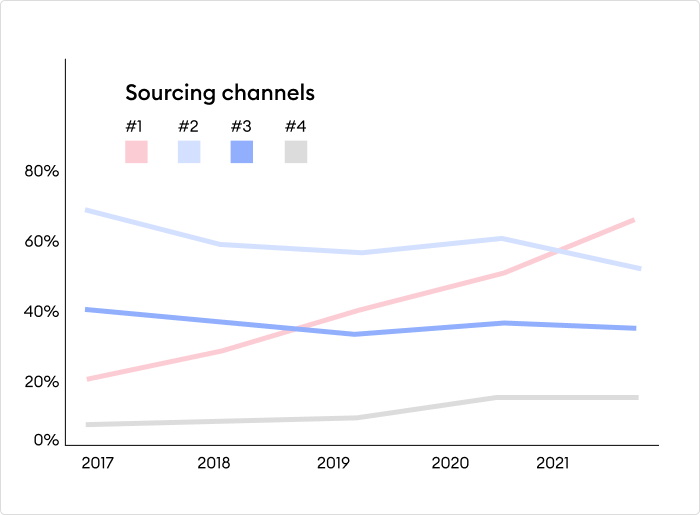
The source of hire metric shows how many candidates each of your sourcing (recruitment) channels brings. Sourcing channels can include job boards, recruitment agencies, the company career site, or employee referrals. Tracking recruiting metrics, you can use Google Analytics, which shows what attracts the viewers of a job vacancy. Incorporating this recruitment data into the recruiting process allows for a more comprehensive understanding of the effectiveness of each sourcing channel and enables informed decisions in optimizing recruitment strategies.
Sourcing channel effectiveness
This is the recruiting metric to display what sourcing channel brings you the most likely and prospective candidates during a specific period of time. In other words, it counts conversion rates per channel. To calculate it, divide the number of candidates from the channel during a given time frame by the number of qualified candidates.
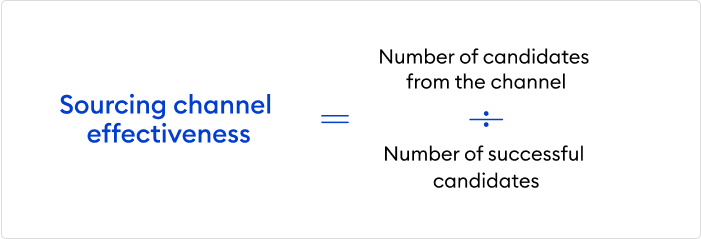
Knowing these statistics, you can find out what hiring process channels are most effective and beneficial. For example, you see that employee referrals do a good job, but job boards do not. Your new hires coming from those platforms tend to quit soon. What’s behind that? Maybe job descriptions are misleading. You can try revising them and track recruiting metrics to see how them changes.
Sourcing channel cost
This recruitment metric indicates the cost efficiency of a channel used to source hires. It refers to the money you spent on advertising on these sourcing channels. To calculate the cost, divide the ad spend per platform by the number of visitors who applied for your vacancy.

Application Hiring Process Metrics
These corporate recruiting metrics help to assess how candidates apply for jobs, how many people compete for a job, and what percentage of them ultimately accept your offer.
Applications per opening
This recruiting metric shows how many people apply for a job and reflects its popularity. If it’s high, it doesn’t necessarily mean you’ve got that many quality candidates. It can be a sign that job descriptions are too broad, and you need to revise them. A detailed job specification will help at the screening stage of recruitment.
Interview to hire ratio
This ratio, known as the interview hire ratio, compares the number of job interviews that have been conducted against the number of candidates who are ultimately hired. It helps assess a recruiter’s performance in the sourcing and screening of new hires. For example, the rate can be estimated as 4:1 if the recruiter conducted interviews with four candidates to make an offer to one of them. The ‘golden mean’ for this metric is 3:1.
Offer acceptance rate
This metric demonstrates the percentage of candidates who actually agreed to accept your job offer. To calculate it, divide the number of accepted job offers by the number of all job offers given in a certain period of time.

Offer acceptance rates help you improve hiring process policies and explore the reasons why they can be low. Why do candidates decline job offers? What if you change the work schedule and give a pay raise? Or speed up offering in order not to lose talented candidates to other companies? Adjustments to the hiring processes can increase the offer acceptance rate.
Selection ratio
The selection ratio indicates how competitive your vacancies are. To calculate it, divide the number of hired candidates by the total number of candidates.

Recruitment Effectiveness Metrics
These are the core indicators that assess the time and money that has been spent to acquire new employees.
Time to fill
This recruitment metric refers to the average period of time needed to find and hire a new employee to fill a job vacancy. It’s estimated by the number of days between job opening and hiring the candidate. This metric is reported quarterly.
To calculate it, divide the amount of time spent on filling positions by the number of the positions.
It will be more meaningful when counted and applied in one particular company or for particular jobs. For example, the time to fill frontline positions can be just up to a couple of days, whereas finding a product owner for an IT company might take much longer. This metric provides valuable insights into the efficiency of the hiring process and aids in streamlining the overall hiring strategy.

Time to hire
This metric represents the number of days between the first contact with the candidate and the day they accept the job offer. You should distinguish this from the previous hiring metrics, as the time to hire shows how fast your talent acquisition team recognizes the most suitable candidate.
The worldwide average time to hire was 38 days in 2018. However, figures vary from industry to industry. For example, it is estimated at 12.6 days for the construction industry and 24.6 days for wholesale and retail in the USA.
Also read:
Recruitment funnel effectiveness
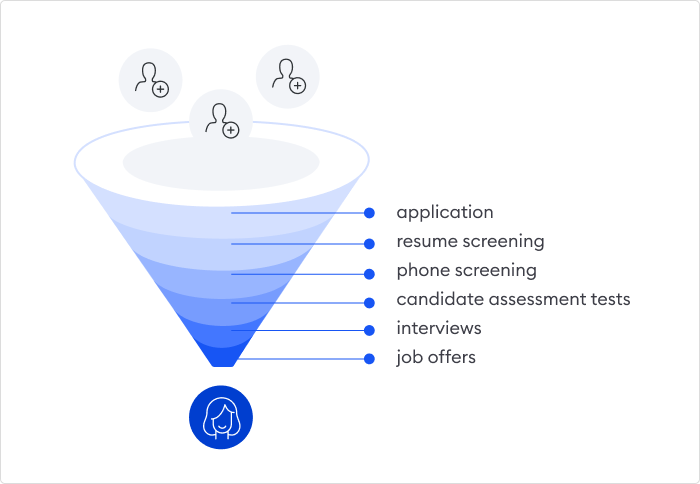
This recruiting metric, within the recruiting process, is applied to assess how things are going at every step of recruitment. It is also called the ‘yield ratio’ and shows how many candidates pass each of the stages. These stages usually include application, resume screening, phone screening, candidate assessment tests, interviews, and job offers. By using this metric, you can estimate the performance of recruitment and present it in clear figures to the board of directors.
To calculate the recruiting funnel effectiveness, divide the number of qualified candidates by the total number of candidates who entered that stage.

Let’s take the resume screening stage, for instance. If 60 CVs were reviewed and 10 candidates were submitted as a result, then the metric is 6:1.
Cost per hire
This is the average cost that your company spends on a new hire. To calculate it, you can divide the sum of recruiting costs by the number of people hired in a given period of time. What can be included in the list of your recruiting costs? There can be recruiter salaries, employee referral bonuses, agency fees, travel and relocation, applicant tracking system (ATS), and other software, as well as advertising and internal recruiting costs.
In the United States, the average cost per hire is $4,129. While assessing this metric in your company, you should consider position levels, departments where your hires belong, and source of hire. For example, the cost of an entry-level employee replacement will be less ($3,400).
Time to productivity
The time to productivity metric is the time needed to get employees up to the Optimum Productivity Level (OPL). On average, it takes 28 weeks to reach this point. The duration of this period depends on the industry, firm size, and employee background.
Cost of getting to OPL
This metric stands for the cost of getting an employee up to optimal productivity level. It includes onboarding and training costs, the cost of the supervisor’s work, and the assistance of employees involved in on-the-job training. It can also include a percentage of the salary until the OPL is reached.
Team Sustainability Metrics
These are the recruiting metrics that have a lot to do with employee turnover. By paying attention to them, you can become a company that attracts the right people and retains them longer. Incorporating these recruiting metrics into your recruiting process will not only help in identifying areas of improvement but also contribute to creating a more effective and streamlined hiring strategy.
Quality of hire
This represents the number of new employees who don’t leave the company and do a good job in the first year. It indicates the loyalty of the new hire and the quality of their work. It also shows the effectiveness of recruiter work.
This metric is rather complicated and may include factors that can vary from company to company. When this rate is high, it means a lot: good productivity, low turnover, and, consequently, less money spent on hires who didn’t fit in. If it is low, recruiting teams may be doing things wrong and are missing the right candidates.
Candidate job satisfaction
Also known as the candidate net promoter score, this measures the extent to which a candidate is satisfied with a job and a company. It indicates whether their expectations are met, and their impression of the job. Integrating candidate satisfaction assessments into the hiring process is essential for cultivating a positive candidate experience, shaping a favorable employer brand, and fine-tuning the recruiting process to align more closely with candidate expectations and preferences.
Candidate job satisfaction can be assessed via direct conversation or using anonymous surveys based on the Likert scale. In the case of the latter, you can prompt new hires to score given statements with Strongly disagree (1) to Strongly agree (5).
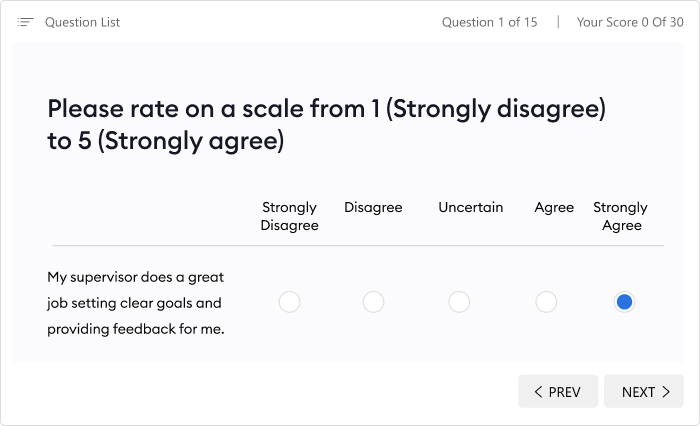
To get the candidate job satisfaction index, divide the total point score by the number of questions, and multiply the result by 100.
You can also analyze responses to each of the statements. If some of them tend to gain low scores, they may be pain points and indicate mismanagement.
90-day retention
This metric, within the recruiting process, shows how many new hires successfully complete the 3-month probation period. It also intersects with an early turnover rate, showing people who leave a new job voluntarily during the first 90 days. 90-day retention is a quick indicator of whether onboarding is going right and new hire experience is positive. If it’s not, the issue may be rooted in mismatched expectations and lack of adaptation.
First-year attrition
This shows how many employees leave a job within their first year at a company. It can be substituted with the new hire retention metric that implies how many people decide to stay in an organization. Knowing this metric is very important, because if attrition is high, it indicates probable bottlenecks in onboarding, training, and operations.
Attrition can be managed and unmanaged. If it is managed, it means the employer decides to fire an employee. When it is unmanaged, it is the employee who leaves the company voluntarily.
The reasons behind both can be varied and require careful examination.
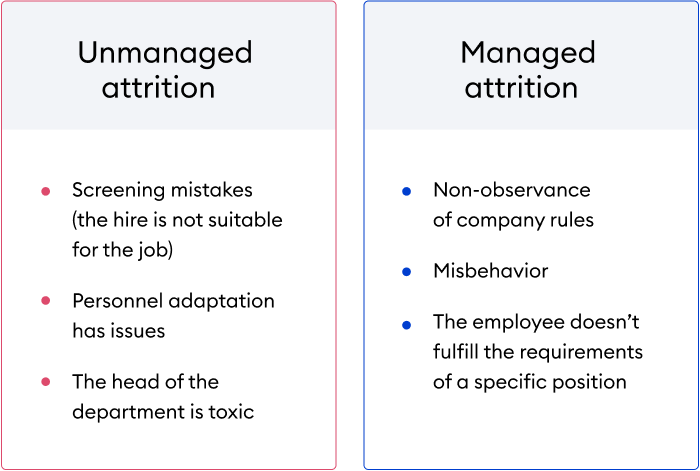
In the case of managed attrition, don’t let this ‘managed’ part mislead you. Though you’re in control, there may be systemic factors like corporate culture issues. They should be regarded as warning signals.
If companies don’t manage these recruiting metrics and leave them to chance, the entire team is exposed to unsustainability. They’re relevant for all the categories of your future employees: both frontline workers, middle management, and senior executives.
Quality of hire, candidate experience, candidate satisfaction, and retention metrics can be significantly influenced by the careful planning of pre-boarding, induction, onboarding, and job-specific training within the recruiting process. If conducted online, training can speed up new hire adaptation, reduce churn, and improve employee performance. That’s where a learning management system (LMS) comes in.
How to Improve Recruiting Metrics with iSpring Learn LMS
A learning management system helps you manage the entire training process: store materials, enroll learners, assign courses to them, collect training results, and more. For the HR team, the right LMS is like a robust helper: it saves you from tedious repetitive tasks and allows you to focus on staff development. For learners, it makes online courses and quizzes so convenient and accessible that any employee can fit training into their schedule.
iSpring Learn is an online platform that can facilitate the necessary training in each stage of the employee’s life cycle. With its help, you can deliver knowledge to large numbers of learners and assess the new hires of any job position.
For every category of new employees, hiring process and onboarding will be different. Next, we’ll look at the three following categories of workers:
- Non-qualified professionals
- Qualified professionals
- Senior executives
We’ll elaborate on the key factors, recruiting metrics, and objectives to enhance recruitment in each category. We’ll also show how iSpring can help in each case.
Non-qualified professionals/frontline workers
Hiring this category of employees has certain peculiarities. First, it must be fast. Second, recruitment does not presuppose the preliminary assessments and selection of candidates. Third, the scaling is large, so the hire cost should be as low as possible. Under these circumstances, a company’s main task is making a new hire fully productive more quickly.
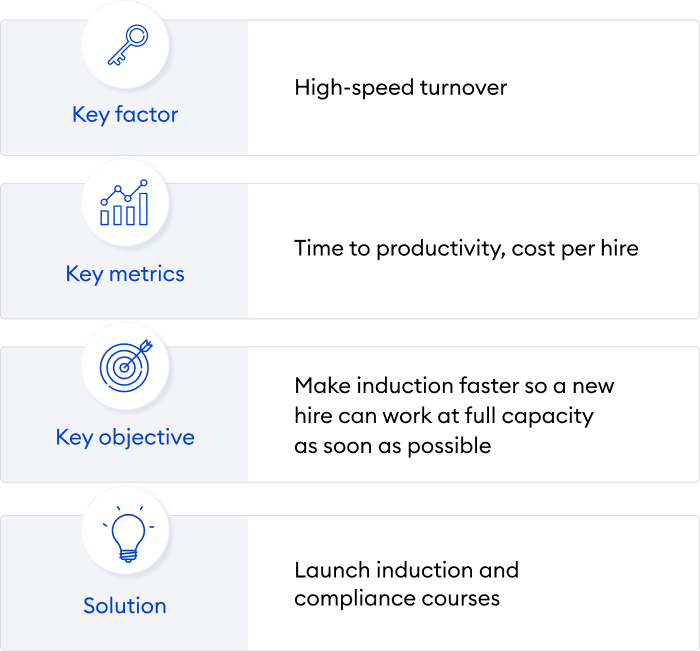
How iSpring can help
Speed up onboarding
Let’s say you hire a new cashier. If they have no experience, it takes some time and a fellow worker’s assistance to train them on how to use a cash register. Instead, you can upload an online course or a video tutorial on how to use a cash register into iSpring Learn. Assign new hires to complete them on their smartphones before day one. This way, they can be ready for work from the very beginning, and you reduce induction time significantly.
Scale your new hire training
You can also add mandatory training materials in the LMS within the recruitment process. Workplace safety rules, company policies, or work instructions can be delivered in the form of online courses. The LMS lets you reuse them over and over again for new onboards. You can build online courses with quizzes yourself with an authoring tool like iSpring Suite and then upload them to the LMS.
Below is a compliance course made in iSpring Suite. Safety courses like this can be a part of induction training for the new hire.
With online learning, your employees will start working according to unified standards faster and make fewer mistakes. Here you can learn more about how to create an online course.
Qualified professionals/middle management
This category of employees is the core of any company and always in the spotlight. In today’s world, we see increased job-hopping, and retention of qualified employees is one of the priorities for companies. That’s how you can improve new employee adaptation and retention.
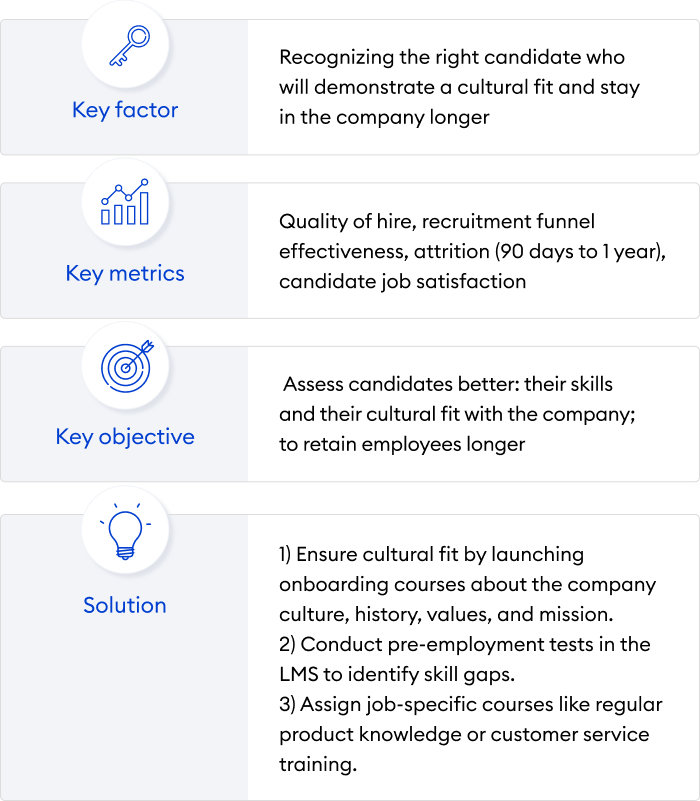
How iSpring can help
Ensure cultural fit
Create and share courses about your company’s history, mission, and corporate culture with your new hires. You can upload these courses to iSpring Learn and invite candidates to take them during the preboarding stage. In these courses, you can include interviews with your employees in which they share their experiences and success stories. This will give future employees a sense of your company and help you recognize those who will fit in.
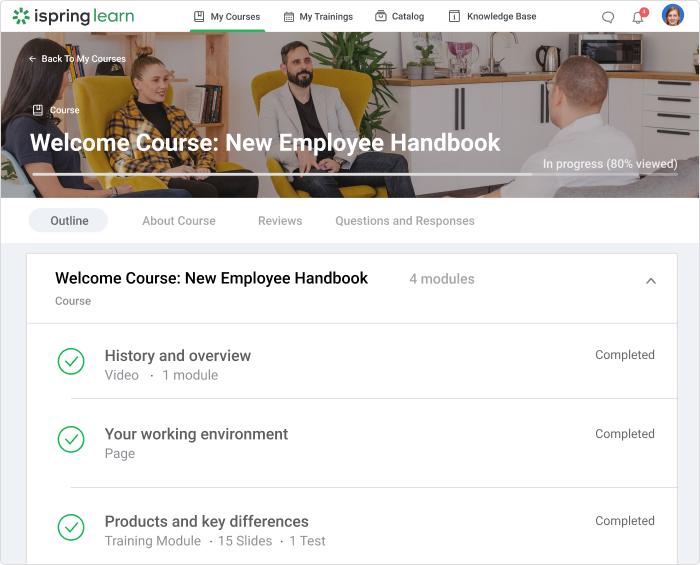
New employee onboarding with iSpring Learn
Conduct pre-employment tests
You can enhance the screening process by testing your candidates’ knowledge and competencies. Candidate experience assessments in the LMS will help you detect skill gaps and understand how to proceed with recruitment. iSpring Learn will bring you all the needed stats of responses effortlessly.
Assign job-specific courses
You want to work with high-skilled professionals, right? Heads of departments don’t want to do rework because of employees who are not sufficiently qualified. Then it should come as no surprise that you should train your staff as part of the recruitment process. Sufficient employee training can help people grow skills, reduce churn, and increase loyalty to the company. Online courses for sales, marketing, and customer service teams will be the right choices.
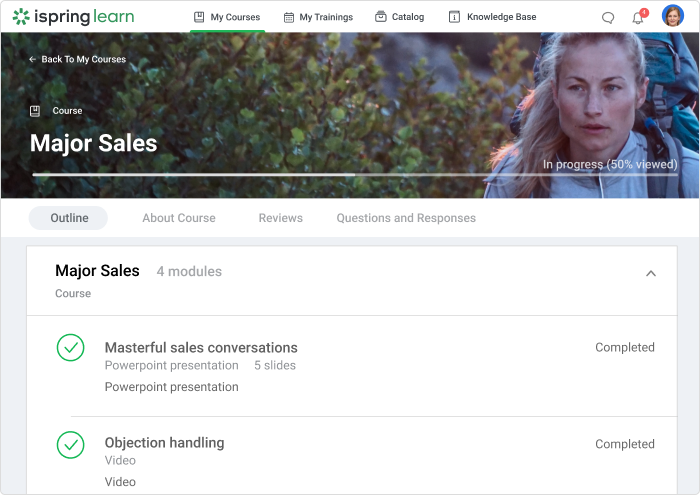
A sales training course in iSpring Learn
Below, you can see what a product knowledge course can look like. It will be helpful to include a basic product knowledge course in your onboarding program for all new hires.
Or here is a course for customer service and sales professionals.
Senior management and executives
New executives are our final category of employees with particular needs within the recruitment process. During this time, they are challenged to make a measurable difference for the business. Not only is their task performance assessed, but compatibility with the brand’s image as well.
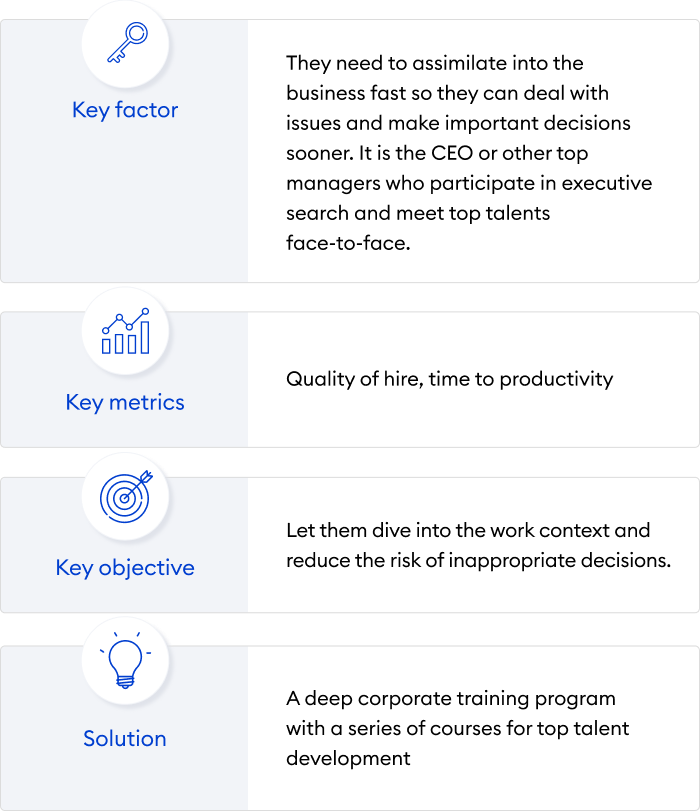
How iSpring can help
Create learning tracks for executives
Training for executives is relatively long and should be systematic. Putting courses into a single aligned program for them is totally possible with an LMS. Such a series of courses, quizzes, and other materials is called a learning track.
According to Oleg Pashukevich, a corporate training expert at iSpring, a learning track for new executives should include:
- Corporate communications course. This is ‘the rules of the game’ in a company. The course on corporate communications will explain how the company works, communicates, and builds its brand. For example, it may include the company’s email policies on attachments and format, and other nuances.
- Business values materials. These can take the form of welcome courses and transmit what values are important for the business.
- Product knowledge course. Usually, executives take these slowly (up to half a year), and these courses might not be so function oriented as courses for the majority of staff.
- Interim face-to-face meetings. These are conducted regularly, at least every week, to “feel the pulse” of top talent onboarding.
It is crucial to get new senior managers through onboarding and introduce them to the LMS and other tools the entire company uses. You better strike the iron before it breezes and embed your new talents within company culture and training from the very beginning.

Automate the Onboarding Process with iSpring Learn
A proper LMS not only stores all the necessary training materials in one place, but also removes repetitive tasks from the HR department’s workload and makes things easier. Let’s take iSpring Learn, for example, to see how it works.
With iSpring, you establish certain procedures once, and the LMS will do the rest. You can create groups of users and enroll users in courses automatically by defining rules. For example, you can specify that all new hires get assigned to an onboarding course immediately after they are added to the “interns” group.
Also, if you need to train staff with a certain frequency, to refresh their skills, for example, the system can automate the re-enrollment process.
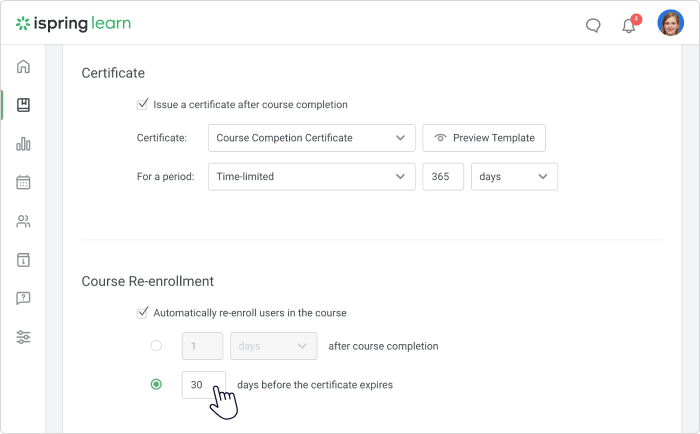
With iSpring, you don’t have to send notifications manually. They are automated and can be applied to live training events as well. Add a new event in the built-in calendar and set a reminder with a click. The system will send notifications to the participants of the event. If there are some changes in the time or location of the training, edit these details, and the participants will be notified in advance.
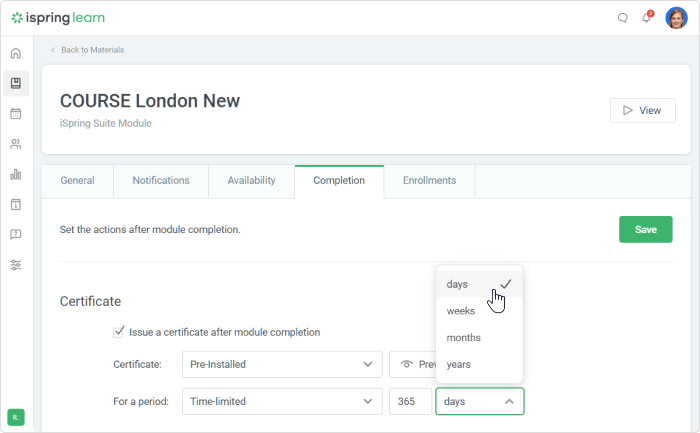
iSpring Learn gathers and organizes all the training stats into comprehensible reports, and makes this process automated too. So, instead of preparing a report manually every two weeks, you can set the LMS to send it via email to the board of directors. This will take just a few clicks.
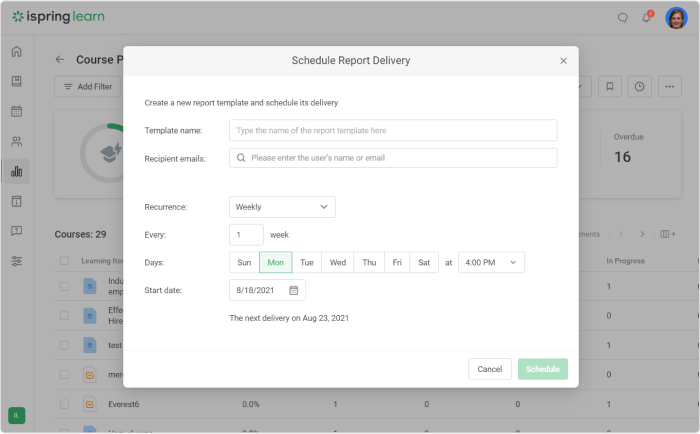
If you use HR systems for recruitment, iSpring Learn integrates with them smoothly and can transfer all prospective candidates or new hires automatically. For example, once you add a new hire to your HR system, iSpring Learn will create an account for them and assign a training program. You don’t do double work and save time.
FAQ on Recruiting Metrics
What are top 5 key metrics in recruiting?
- Time-to-Fill (TTF): Measures days to fill a vacancy.
- Cost-per-Hire (CPH): Evaluates hiring expenses.
- Quality of Hire (QoH): Assesses new hires’ performance.
- Source of Hire: Identifies effective recruitment channels.
- Retention Rate (90-day retention and first-year attrition): Measures new hires’ staying power.
What is KPI in recruiting?
KPI in recruiting stands for Key Performance Indicator. These are specific metrics used to evaluate the effectiveness of the recruiting process and measure the success of various activities within the hiring workflow. KPIs in recruiting help organizations set and achieve their hiring goals, assess the performance of the recruitment team, and make data-driven decisions to optimize the overall talent acquisition strategy.
How does Time-to-Fill impact the overall hiring process?
Time-to-Fill (TTF) significantly shapes the hiring process. Lengthy processes impact candidate experience, risking frustration and potential loss of candidates to competitors. Swift hiring secures top talent, enhances employer branding, and maintains positive employee morale. However, delays increase recruitment costs, may reduce the pool of high-quality candidates, and hinder the organization’s strategic agility. Balancing thorough evaluation with timely recruitment is essential for efficiency, cost-effectiveness, and overall success in attracting and retaining top talent.
To Sum Up
Recruitment is essential to bring new blood and ideas into your company. Recruiting metrics help you understand how well you attract and retain new employees, and what impression your company makes on candidates. It can all be improved with careful attention to the pre-boarding and onboarding of new hires. An LMS like iSpring Learn ensures fast course delivery on any device and a good training experience for your new hires. Give it a try for free!

